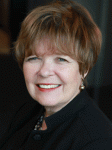 Is your organization ready to bridge the knowledge gaps retiring baby boomers will leave behind?
Is your organization ready to bridge the knowledge gaps retiring baby boomers will leave behind?
Here is an excerpt from an article written by Darnell Lattal for Talent Management magazine. To read the complete article, check out all the resources, and sign up for a free subscription to the TM and/or Chief Learning Officer magazines published by MedfiaTec, please click here.
* * *
Every day for the next 18 years, 8,000 Americans will turn 65. That demographic includes today’s 47-year-olds. The AARP estimates only about 37 percent of companies have considered how this brain drain will affect them in the next five to 10 years.
The skills leaving the workplace will create a knowledge gap that is hard to close. Therefore, leaders must think differently about their people assets and create a culture of succession readiness. Knowledge will be lost if preparation does not begin now.
Building in Readiness
Building a culture of succession readiness means learning how to observe, shape and reinforce the right behaviors for all employees to achieve and sustain success. Start with strengths.
Find exemplary performers and look at what they do. Leaders should capture what happens so they know which activities to teach, practice and reinforce. A succession-ready culture will create more capable performers as talent managers take on their most important role — developer-coach.
Open architecture describes a culture designed to teach or cross-train employees, providing them with multiple skill sets. This makes adding, upgrading or swapping activities easier, yet many organizations tend to pigeonhole their employees.
Tom Gilbert, a 20th century performance expert, created a formula to measure the performance improvement potential for every worker in a specific work setting. By looking at the exemplar, Gilbert demonstrated what the variance was in terms of possible — or potential — performance.
Some companies today use Gilbert’s formula. Instead of assuming the most accomplished performer is uniquely different from the lowest performer, his work reminds that differences often relate to opportunity and contingency. With proper coaching — opportunity — and consequences for increasing skills — contingency — a performer at any level of accomplishment can advance.
Gilbert demonstrated that there is an acceleration curve, but not a bell curve, on performance potential. Extraordinary performance is shaped and limited only by workplace conditions, and those conditions are in the talent managers’ hands.
* * *
To read the complete article, please click here.
Darnell Lattal is president and CEO of Aubrey Daniels International. She can be reached at the firm.